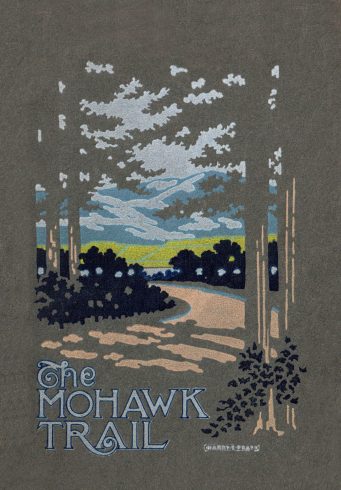Relentless promotion, political and business manipulation by “motordom” (follow the money…) have been held largely responsible for the triumph of motoring in the USA in the early 20th Century. Peter Norton’s book Fighting Traffic is the best-known work making this case. I think that the triumph of motoring in urban areas can fairly be described as a tragedy of the commons, accelerated by these factors but also by the inherent changes in the use of streets which motoring brought about as it spread from the affluent to the middle class. By the time motoring had seriously affected air quality, access, and land use, the impacts on other modes of transportation were difficult to undo.
In rural and agrarian areas, on the other hand, motoring was seen as intensely liberating, and as evidence, I present The Mohawk Trail — a 64-page program booklet describing an elaborate four-day pageant in the small city of North Adams, Massachusetts, celebrating the construction of the road of the same name. The road goes over Hoosac Mountain, connecting North Adams, in the northern Berkshire Valley of western Massachusetts, with the towns of the Connecticut River Valley to the east. Hoosac Mountain was already the site of the famous Hoosac Tunnel, making the same connection by rail, but a road allowed greater convenience and flexibility in travel plans.
I happened upon a copy of the booklet at a yard sale in my neighborhood in Waltham, at the other end of Massachusetts. I have no idea how this copy came to my neighborhood — but it has to have belonged to someone who was at the pageant. Penciled-in annotations describe the costumes which participants wore at the event.
The booklet includes a detailed description of the pageant, long lists of participants, photos of some of them — and of the road under construction — dirt and gravel-surfaced, though, the booklet states, “[a]s rapidly as practicable, it will be macadamized for its entire length.” Some photos show deep ruts, perhaps made by the car described in one photo as the first to travel over the mountain.
The descriptions and long lists of names offer insights into life in North Adams — ethnic composition, and what counted at the time as inclusiveness.
I have scanned the booklet and posted it online for your entertainment and reflection.

